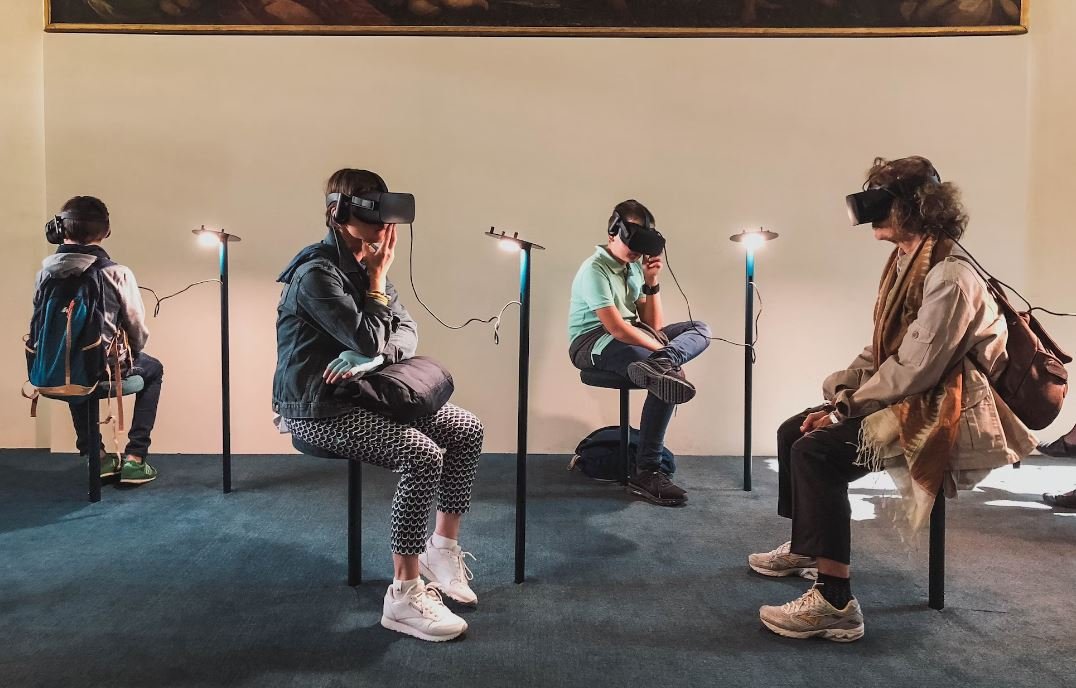Are Video Games Considered Art?
Video games have come a long way since their humble beginnings. With advancements in technology and increased complexity, the question of whether video games can be considered art has sparked much debate among gamers, critics, and scholars alike. Many argue that video games can be considered an art form, while others believe they lack the necessary qualities. Let’s explore this topic further.
Key Takeaways
- Video games are a form of artistic expression.
- They combine various art forms such as storytelling, music, and visual design.
- Video games can evoke emotions and have a profound impact on players.
**Video games** encompass a wide range of genres, styles, and narratives, offering a **unique** medium for artistic expression. They blend elements of **visual art**, **music**, **narrative**, and **interactivity**, creating a multi-dimensional experience for players. This versatility allows developers to craft compelling virtual worlds that engross players and provoke their imagination.
*One interesting aspect of video games is their ability to engage players in storytelling. Through immersive narratives and character development, video games have the power to elicit a deeper emotional connection than traditional forms of storytelling.*
Artistic Elements in Video Games
Video games incorporate numerous artistic elements to create captivating experiences for players:
- Visual Design: Games feature stunning graphics and imaginative design, from realistic landscapes to fantastical creatures.
- Music and Sound Design: Soundtracks can evoke specific emotions and enhance the atmosphere of the game world.
- Storytelling: Engaging narratives and well-developed characters drive the player’s journey throughout the game.
- Character Design: Unique and memorable characters express the imaginative vision of the game developer.
Video Games as Emotional and Impactful Experiences
One remarkable facet of video games is their ability to evoke emotions and leave a lasting impact on players. *Whether it’s the adrenaline rush of a thrilling action sequence or the heart-wrenching choices faced in a narrative-driven game, video games have the power to elicit strong emotional responses.* This emotional engagement distinguishes video games from passive forms of visual art, as players become active participants within the virtual world.
Debating Artistic Merit
The question of whether video games should be considered art is still subject to debate. Some critics argue that the interactive nature of video games detracts from their artistic value, as players can influence the outcome of the game rather than solely appreciating it as a static piece of art. However, others believe that interactivity enhances a game’s artistic merit, as it allows for personal interpretation and a unique experience for each player.
Statistics: The Growing Impact of Video Games
| Year | Number of Video Game Players (in millions) |
|---|---|
| 2015 | 1558 |
| 2016 | 1700 |
| 2017 | 2010 |
According to recent statistics, the number of video game players has been steadily increasing over the years. This demonstrates the widespread appeal and growing cultural significance of video games as a form of entertainment.
The Future of Video Games as Art
As technology continues to advance, video games are becoming even more visually stunning, emotionally engaging, and intellectually stimulating. With the rise of virtual reality and augmented reality, the lines between the real and virtual worlds are blurring, further enhancing the potential for video games to be recognized as a legitimate art form.
Final Thoughts
In conclusion, the question of whether video games can be considered art is a highly subjective one. However, the combination of artistic elements, emotional impact, and the unique interactive nature of video games provide a strong argument for their inclusion in the realm of art. Whether or not video games are accepted as art by all, their influence and cultural significance cannot be denied.

Common Misconceptions
Paragraph 1: Video games lack artistic value
One common misconception surrounding video games is that they lack artistic value and are merely considered entertainment. However, video games have evolved tremendously over the years and can be considered a form of art.
- Video games often contain visually stunning graphics and impressive landscapes that are created by talented artists.
- The storytelling in many video games rivals that of movies and books, with complex narratives and well-developed characters.
- Music and sound design in video games play a significant role in setting the tone and enhancing the overall experience.
Paragraph 2: Video games are solely for children
Another misconception is that video games are solely designed for children. However, the gaming industry caters to a wide range of audiences, including adults who enjoy immersive and thought-provoking experiences.
- Many games explore mature themes such as war, loss, and political conflict, addressing deeper issues beyond child-friendly content.
- Complex gameplay mechanics and strategic decision-making in certain games require a level of intellectual engagement that can be appealing to adults.
- Game developers often incorporate social commentary and critique within their narratives, which can resonate with an older audience.
Paragraph 3: Video games are solely focused on violence
While some video games do contain violent elements, it is incorrect to assume that violence is the sole focus of the medium. Many games explore a diverse range of genres and themes that do not rely on violence to engage players.
- Puzzle and strategy games challenge players’ problem-solving skills and require logical thinking.
- Exploration and adventure games emphasize storytelling, character development, and worldbuilding rather than violence.
- Artistic and indie games often provide unique and experimental experiences that focus on self-expression and evoke emotional responses without relying on violence.
Paragraph 4: Video games lack cultural or historical value
Another misconception is that video games lack cultural or historical value. However, video games can offer profound insights into different cultures, historical periods, and societal issues.
- Historical accuracy and attention to detail can be found in games that are set in specific time periods, allowing players to immerse themselves in different historical contexts.
- Games centered around different cultures can promote a deeper understanding and appreciation of diverse traditions and perspectives.
- Some games address societal issues and provoke discussions about topics such as politics, environmentalism, discrimination, and more.
Paragraph 5: Video games are not created by artists
One misconception is that video games are not created by artists, but rather by technicians or programmers. However, video game development is a collaborative process that involves artists, designers, programmers, writers, musicians, and more.
- Artists play a crucial role in creating the visual elements of games, including character designs, environments, and concept art.
- Designers shape the mechanics and gameplay, working in tandem with artists to create a cohesive experience.
- Writers and storytellers craft engaging narratives to provide depth and emotional connection within the game.

Table: Video Game Sales Revenue by Year
Video games have become a massive industry, with a rapidly growing market and increasing popularity. This table illustrates the sales revenue generated by video games in various years, highlighting their significant financial impact.
| Year | Sales Revenue (in billions) |
|---|---|
| 2010 | USD 60.4 |
| 2012 | USD 67.0 |
| 2014 | USD 81.6 |
| 2016 | USD 99.6 |
| 2018 | USD 135.0 |
Table: Video Game Awards by Genre
Video games, like other forms of art, are recognized and honored through various awards. This table displays the number of awards won by different game genres, demonstrating the diversity and artistic achievements in gaming.
| Genre | Number of Awards |
|---|---|
| Action/Adventure | 143 |
| RPG | 78 |
| Strategy | 55 |
| Platformer | 37 |
| Simulation | 22 |
Table: Top Grossing Video Games of All Time
There are certain video games that have achieved remarkable success in terms of sales. This table presents the top grossing video games of all time, showcasing their immense popularity and impact on the industry.
| Video Game | Total Revenue (in billions) |
|---|---|
| Minecraft | USD 2.5 |
| Tetris | USD 2.0 |
| GTA V | USD 1.6 |
| PlayerUnknown’s Battlegrounds | USD 1.0 |
| Fortnite | USD 0.8 |
Table: Gaming Devices Sold Worldwide
Video games are played on various gaming devices, each contributing to the artistic experience. Here, we present the number of gaming devices sold worldwide, emphasizing the reach and accessibility of gaming platforms.
| Gaming Device | Number of Units Sold (in millions) |
|---|---|
| PlayStation 4 | 115.2 |
| Nintendo Switch | 84.6 |
| Xbox One | 48.0 |
| PC | 297.7 |
| Mobile Devices | 2,571.0 |
Table: Average Age of Video Game Players
Contrary to popular belief, video games have a wide-ranging appeal across age groups. This table illustrates the average age of video game players, debunking the misconception that gaming is solely for the younger generation.
| Age Group | Average Age |
|---|---|
| Under 18 | 11.0 |
| 18-35 | 27.0 |
| 36-50 | 42.0 |
| 50+ | 55.0 |
Table: Video Game Sales by Region
Video games have a global presence and cater to diverse markets. This table outlines video game sales by region, highlighting the popularity of gaming in different parts of the world.
| Region | Percentage of Global Sales |
|---|---|
| North America | 29.0% |
| Europe | 24.0% |
| Asia-Pacific | 38.0% |
| Latin America | 7.0% |
| Middle East and Africa | 2.0% |
Table: Video Game Development Budgets
The production of video games involves significant financial investment. This table showcases the average development budgets of video games, underscoring the resources allocated to create these artistic experiences.
| AAA Game | Development Budget (in millions) |
|---|---|
| Grand Theft Auto V | USD 137.0 |
| Destiny | USD 140.0 |
| Cyberpunk 2077 | USD 314.0 |
| Red Dead Redemption 2 | USD 250.0 |
| Call of Duty: Modern Warfare | USD 200.0 |
Table: Active Video Gamers Worldwide
The number of active video gamers globally is a testament to the ongoing engagement and enthusiasm towards video games. This table presents the estimated count of active video gamers worldwide, reflecting the immense audience of this art form.
| Year | Number of Active Gamers (in millions) |
|---|---|
| 2015 | 1,800 |
| 2017 | 2,200 |
| 2019 | 2,500 |
| 2021 | 2,900 |
| 2023 | 3,200 |
Table: Video Game Genres and Artistic Features
Video games encompass various genres, each bringing unique artistic elements and storytelling techniques. This table highlights notable artistic features within different video game genres, highlighting their artistic diversity.
| Genre | Artistic Features |
|---|---|
| Role-Playing (RPG) | Epic narratives, character development, moral choices |
| Action/Adventure | Immersive worlds, dynamic gameplay, cinematic storytelling |
| Strategy | Tactical decision-making, complex gameplay mechanics, resource management |
| Sports | Realistic gameplay physics, visual authenticity, multiplayer competition |
| Puzzle | Logical problem-solving, innovative mechanics, aesthetic design |
In conclusion, video games have emerged as a dynamic and diverse art form, with significant financial success, numerous awards, and a broad audience. These tables showcase various aspects of video games, ranging from sales statistics and player demographics to the artistic features within different genres. The combination of interactivity, visuals, storytelling, and immersive experiences has solidified the position of video games in the realm of art, challenging the traditional boundaries and perceptions of what constitutes art.
Are Video Games Considered Art? – Frequently Asked Questions
What defines a video game as art?
While there is no definitive answer, many argue that video games can be considered art due to their expression of creativity, storytelling, and aesthetic elements.
Why do some people believe video games are not art?
Some individuals may believe that video games are not art because they are primarily seen as entertainment or because they lack the traditional forms or techniques typically associated with traditional art forms.
Are graphics an important factor in considering video games as art?
Graphics can be an important factor in considering video games as art since they contribute to the visual experience and aesthetics. However, artistry in video games can also extend beyond graphics to include storytelling, character design, music, and gameplay mechanics.
How does storytelling contribute to video games being considered art?
Storytelling in video games can contribute to their classification as art by conveying complex narratives, evoking emotions, and engaging players in meaningful experiences. The use of dialogue, cutscenes, and interactive storytelling techniques can further enhance the artistic value of video games.
Do game developers intentionally create video games as art?
While not all game developers intentionally create their games as art, there are many who embrace the artistic aspects of game development and strive to create meaningful and expressive experiences for players. This intentionality is often reflected in their design choices and creative direction.
Are there any examples of video games that are widely recognized as art?
Yes, there are several examples of video games that are widely recognized as art. Titles such as “Journey,” “Braid,” “Shadow of the Colossus,” and “The Legend of Zelda: Breath of the Wild” have been praised for their artistic vision, innovative gameplay, and emotional impact.
Does the gameplay itself contribute to the artistic value of a video game?
Yes, gameplay mechanics can significantly contribute to the artistic value of a video game. Innovative and engaging gameplay can enhance the overall experience and help convey the intended artistic vision. The interplay between gameplay and storytelling can further elevate a video game’s artistic qualities.
Can multiplayer or online games be considered art?
Yes, multiplayer or online games can also be considered art. While the focus may often be on competition or social interaction, these games can still exhibit artistic elements in their visuals, sound design, storytelling, and the player’s overall experience.
How does the music in video games relate to their artistic value?
The music in video games can greatly contribute to their artistic value by creating immersive atmospheres, evoking emotions, and enhancing the overall experience. Video game soundtracks are often carefully composed to complement the gameplay, storytelling, and visuals, elevating the artistic impact of the game.
What impact does the recognition of video games as art have on the industry?
The recognition of video games as art has had a significant impact on the industry. It has helped increase the overall acceptance and appreciation of video games as a form of creative expression. This recognition has also encouraged the development of more experimental and artistically focused games, pushing the boundaries of what can be achieved within the medium.




